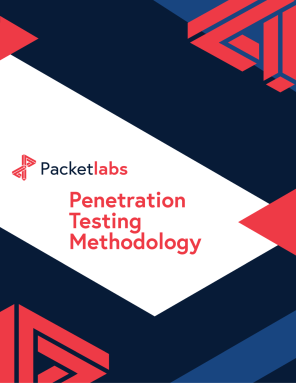The Washington Post 2025 Breach: A Summary
Would you like to learn more?
Download our Pentest Sourcing Guide to learn everything you need to know to successfully plan, scope, and execute your penetration testing projects.
The Washington Post has confirmed that it is among the victims of a large-scale cyber breach tied to Oracle Corporation’s E-Business Suite (EBS) software platform.
This recent attack is part of a broader campaign attributed to the ransomware group Cl0p (also written “Clop”), which claims responsibility for exploiting Oracle EBS vulnerabilities and publicly naming victims on its leak site.
Oracle EBS is used by thousands of organisations to manage functions such as HR, payroll, supply chain, manufacturing, and logistics. In a recent statement, Post representatives have said it was: “impacted by the breach of the Oracle E-Business Suite platform.”
What to Know About the Oracle Attack Against The Washington Post
CL0P, known for its aggressive ransomware tactics, has not responded to media inquiries for comment. Oracle, meanwhile, directed attention to a pair of security advisories released the previous month.
What we know about the Cl0p attack so far is as follows:
Security researchers believe the campaign began as early as July 2025, exploiting zero-day vulnerabilities in Oracle EBS or misconfigurations allowing lateral movement.
Once inside, attackers reportedly leveraged default password-reset functions, compromised administrative accounts (for example the “applmgr” account in Oracle systems) and moved laterally across connected infrastructure.
The Cl0p gang used the classic “double-extortion” model: steal data and threaten publication. At least one demand reached US$50 million.
The Washington Post was publicly named on Cl0p’s dark web leak site, signalling public pressure tactics typical of the group when victims refuse to negotiate.
Washington Post Breach: The Broader Impact
Infrastructure-scale risk: Because many organizations use Oracle EBS, a single vulnerability can give attackers access to dozens or even hundreds of firms via a shared platform. Analysts say this campaign represents a supply chain-style intrusion rather than isolated hacks.
High-profile target: The Washington Post is a globally recognized media organization. The breach not only has operational risk (data exposure) but reputational consequences, especially for a news outlet that reports on such risks.
Extensive victim list: Over 100 organisations are believed impacted. Other confirmed groups include Harvard University and Envoy Air (a subsidiary of American Airlines.)
Regulatory and compliance exposure: Organizations using Oracle systems handle sensitive data (HR, financial, vendor, customer). A breach may trigger legal obligations, reporting requirements, and regulatory scrutiny.
Media sector risk: News organizations hold unique data such as journalist sources, editorial workflows, and subscriber records. A breach in this sector raises issues of press freedom, source protection, and institutional trust.
How to Safeguard Against Cl0p Cyberattacks
Even large organizations with robust cybersecurity infrastructures remain vulnerable to third-party or enterprise-software risks.
Trusted platforms such as Oracle’s E-Business Suite demonstrate how deeply integrated systems can become gateways for threat actors. When one widely used enterprise platform is compromised, the effects can cascade across industries and borders, exposing thousands of businesses that rely on shared technology.
Traditional safeguards such as backups are no longer sufficient on their own. In this breach, attackers first exfiltrated data and then threatened to publish it unless ransom demands were met. This “double-extortion” tactic renders backups and encryption only partial defenses: organizations must prevent theft in the first place and focus on faster detection and containment.
Visibility and monitoring are also critical. Enterprise applications like Oracle EBS often span on-premise and cloud environments, creating blind spots where lateral movement can occur undetected. Expanding visibility across hybrid infrastructures, integrating SIEM tools, and conducting regular audits of connected systems can significantly reduce that risk.
The attack also demonstrates how public pressure amplifies the damage of cyber incidents. When attackers name victims on leak sites or social media, reputational harm compounds financial loss. For organizations in high-trust industries, the threat isn’t limited to operational disruption; it’s the public scrutiny that can follow.
Finally, media and trust-based institutions are increasingly becoming prime targets. Companies and organizations whose credibility and influence rely on reputation( such as those in media, finance, and education) offer adversaries leverage that extends beyond money. For these entities, maintaining public confidence through transparent security practices and proactive risk management is as essential as protecting their digital infrastructure.
Immediate Actions for Affected Companies
Perform full forensic review of all Oracle EBS instances, especially Internet-facing ones; search for “applmgr” account anomalies, unusual outgoing transfers, bash shells spawned from Java processes.
Apply all patches released by Oracle for the vulnerabilities in question; disable default access where possible; segment EBS infrastructure and reduce lateral access paths.
Consider breach notification obligations, especially if personal data (employees, subscribers) may have been exposed.
Prepare crisis-communication strategy: media organisations in particular must address both internal and external stakeholders swiftly.
Review and enhance vendor/supply-chain risk: examine the security of enterprise systems shared by multiple organisations, and treat them as part of your own attack surface.
Conclusion
The Washington Post breach via the Oracle EBS exploit is not isolated: it represents a systemic shift in how cyber-criminals operate.
By targeting a trusted enterprise software backbone, the attackers achieved scale, public leverage, and supply-chain reach.
For companies of any size, the key takeaway is: security is only as strong as your weakest platform and your vendors’ weakest link.
Contact Us
Speak with an Account Executive
Interested in Pentesting?

Penetration Testing Methodology
Our Penetration Security Testing methodology is derived from the SANS Pentest Methodology, the MITRE ATT&CK framework, and the NIST SP800-115 to uncover security gaps.
Download Methodology
Pentest Sourcing Guide
Download our Pentest Sourcing Guide to learn everything you need to know to successfully plan, scope, and execute your penetration testing projects.
Download GuideExplore in-depth resources from our ethical hackers to assist you and your team’s cyber-related decisions.

September 13 - Blog
Why Multi-Factor Authentication is Not Enough
Knowing is half the battle, and the use and abuse of common frameworks shed insight into what defenders need to do to build defense in depth.

November 19 - Blog
The Top Cybersecurity Statistics for 2024
The top cybersecurity statistics for 2024 can help inform your organization's security strategies for 2025 and beyond. Learn more today.

October 24 - Blog
Packetlabs at SecTor 2024
Packetlabs is thrilled to have been a part of SecTor 2024. Learn more about our top takeaway's from this year's Black Hat event.







